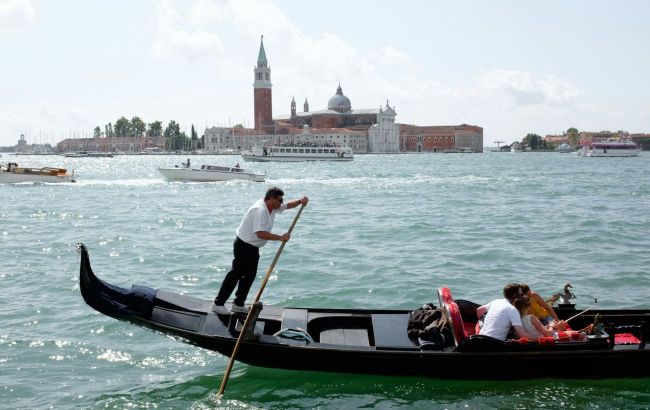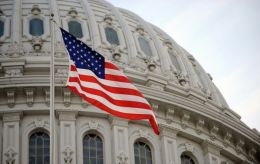Unintended consequences: Global bans on tourist selfies
 Photo: Tourists in Venice (unsplash.com)
Photo: Tourists in Venice (unsplash.com)
Tourism is associated with vibrant experiences and beautiful photos. Many travelers take selfies when visiting iconic places. However, an increasing number of tourist destinations are prohibiting this type of photography, according to euronews.travel, that explores the consequences of tourist selfies and why it is becoming a public health issue.
The obsession with selfies has led to more fatalities than shark attacks
A study published in the Journal of Travel Medicine in 2022 revealed that in the past 13 years, there were 379 deaths associated with selfies. Among them, 140 were tourists who tragically captured their last moments. During the same period, there were 90 fatal shark encounters, mostly unprovoked.
The pursuit of the perfect self-portrait in tourist locations has often resulted in tragic incidents, including fatal falls from cliffs, accidents with vehicles and trains, and dangerous encounters with wildlife.
As a consequence, tourists now face significant fines and arrests for going too far in their quest for the perfect selfie.
One of the recent incidents related to selfies occurred last month in Venice. A group of tourists standing in a gondola was taking selfies and refused to sit down, causing the boat to capsize. Shortly before the incident, the gondolier had requested passengers not to move as he attempted to navigate under a low bridge. Fortunately, the tourists were not seriously injured.
In December, a 24-year-old woman died while attempting to take a selfie on the edge of Prabalgad Fort in India. She fell into a 60m-deep gorge.
During the 2023 Tour de France, a spectator attempted to take a selfie with passing cyclists, inadvertently hooking an American cyclist's handlebars. This led to a pile-up involving 20 riders during the 15th stage of the race.
 Photo: Tourists in Barcelona (unsplash.com)
Photo: Tourists in Barcelona (unsplash.com)
Last year, in the picturesque Portofino in northern Italy, a temporary ban on selfies was imposed in certain areas of the city to prevent crowds on narrow streets. The ban was introduced after tourists obstructed traffic to take photos.
In which countries have the most incidents during self-photography?
Capturing the perfect photo for social media often leads to risky behavior fueled by the desire to stand out and gain more "likes" on social platforms. In the quest for a better shot, people may ignore warnings of danger.
Out of 379 selfie-related deaths from 2008 to 2021, 37.2% of the cases involved tourists rather than locals. Falls from heights constituted half of all deaths, followed by incidents involving transportation (28.4%) and fatalities in water (15.3%).
The average age of selfie-related fatalities during this period was 24.4 years. Women were more likely to suffer fatal injuries from falls and animal encounters, while men were more prone to incidents related to transportation.
The highest number of fatal selfies occurred in India (26.4%), followed by the United States (10.3%) and Russia (8.7%).
However, according to a study in the Journal of Family Medicine and Primary Care, the number of selfie-related deaths is likely higher, as it is often not explicitly stated as the cause.
 Photo: Tourists near Niagara Falls (unsplash.com)
Photo: Tourists near Niagara Falls (unsplash.com)
Dangerous selfies are becoming a public health issue
According to a scientific analysis from the University of Sydney, selfies have become a commonplace part of everyday life, so risky photos should be treated as a public health concern.
Just as previous generations considered driving without seatbelts, biking without helmets, and smoking "normal," societal perceptions have changed. Recognizing risky selfies as a public health issue, society is taking preventive and educational measures.
This approach could yield more results than merely identifying hazardous zones where taking selfies is prohibited — such as bodies of water, mountain peaks, and tall buildings.
 Photo: Tourists in Norway (unsplash.com)
Photo: Tourists in Norway (unsplash.com)
Locations where taking selfies is prohibited
The Japanese company JR West Railway Company has banned the use of selfie sticks on its platforms to prevent electric shock and falls onto the tracks.
Following a series of unfortunate incidents related to selfies in Mumbai, the Indian government banned selfie zones in certain areas of the city — on some beaches, festival venues, and near tourist attractions.
In Pamplona, Spain, taking selfies during the annual "Running of the Bulls" is prohibited.
In New York, taking selfies with wild cats is prohibited if there is no physical barrier between the person and the animal. Visitors to Lake Tahoe are asked not to take "bear" selfies, as turning one's back to a bear is extremely dangerous.
Earlier, the Austrian town of Hallstatt was protesting the influx of tourists. In May, at the most popular photo location, a wooden wall was installed to reduce the flow of selfie enthusiasts against the backdrop of the lake and mountains.
We mentioned before that the famous Italian city is introducing new rules for tourists. Starting this summer, the city will prohibit guided tours for tourist groups of more than 25 people and the use of loudspeakers.

